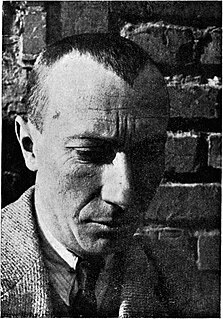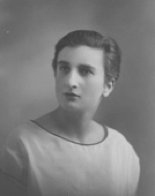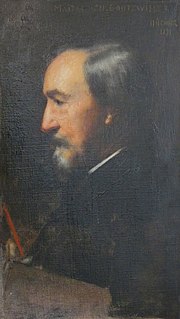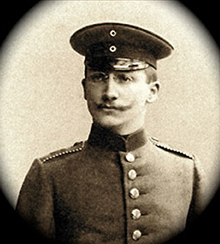 W
WHans Peter Wilhelm Arp, better known as Jean Arp in English, was a German-French sculptor, painter, and poet. He was known as Dadaist and abstract artist.
 W
WRené Beeh was a German draughtsman and painter from Alsace. He was held in high esteem by his contemporaries and called "the coming genius" by art historian Wilhelm Hausenstein, but with his having died prematurely, he has been mostly forgotten.
 W
WJean Benner was a French artist, and twin to fellow artist, Emmanuel Benner.
 W
WJean Brenner was a painter from Mulhouse, France.
 W
WGustave Brion (1824–1877) was a French painter and illustrator. He was born at Rothau in the department of Bas-Rhin 24 October 1824, and in 1841 entered at Strasbourg the studio of Gabriel Guérin, with whom he remained three years; he also received tuition from Andreas Friedrich, the sculptor; but he soon afterwards went to Paris, where his first work appeared at the Salon in 1847; it was entitled Interior of a Farm at Dambach. Six years later he gained a medal of the second class for his 'Schlitteurs de la Foret-Noire' and the Potato Harvest during an Inundation, the former of which was subsequently burned at Strassburg by the Prussians. His fame was further established by his Le Train de Bois sur le Rhin in 1855, and from that time his works continued to increase in public favour, and gained considerable praise and recompense for their author. Brion received numerous medals in 1853, 1863, 1867, 1868, &c., and the decoration of the Legion of Honour in 1863. He died in Paris 3 November 1877.
 W
WMarcelle Cahn was a French painter and one of the members of Abstraction-Création. She was born in a Jewish family of Strasbourg, Alsace and died at 86, in Neuilly-sur-Seine. The French contemporary artist Richard Conte made an homage to Marcelle Cahn in 1995 at the Nicole Ferry Art Gallery (Paris).
 W
WJohann Stephan Decker was an Alsatian French painter.
 W
WPaul Gustave Louis Christophe Doré was a French artist, printmaker, illustrator, comics artist, caricaturist, and sculptor who worked primarily with wood-engraving.
 W
WMartin Drolling was a French painter. He was father to Michel Martin Drolling, and to Louise-Adéone Drölling, one of the few successful female painters of the time.
 W
WMartin Feuerstein was a German painter and art teacher. He was a late adherent of the Nazarene movement, but was also heavily influenced by impressionism and Art Nouveau.
 W
WCharles Antoine Adam Goutzwiller was a French art historian and engraver. At the Altkirch's college, he was the first professor of drawing of the painter Jean-Jacques Henner, who executed his portrait in 1891.
 W
WJost Haller was a 15th-century Gothic painter from Alsace, active in the years 1440–1470, first established in Strasbourg, then in Metz, and in Saarbrücken. He is also called The painter of the knights [not "The painter of knights", or Le peintre de chevaliers].
 W
WJean-Jacques Henner was a French painter, noted for his use of sfumato and chiaroscuro in painting nudes, religious subjects, and portraits.
 W
WHans Hirtz or Hirtze was a German painter of the late Gothic period, recognized as a major painter by art historians as early as the 16th century. He was active between 1421 and 1463 in Strasbourg and other areas of the Upper Rhine. His years of birth and death are unknown, though a reference to his widow in a document of 1466 shows he died before that date - the document shows that she remarried to the Strasbourg stained-glass artist Peter Hemmel.
 W
WLéon Hornecker, was an Alsatian painter of landscapes and portraits.
 W
WJean-Jacques Casimir Karpff was a French painter, designer and miniaturist.
 W
WThe Master of the Karlsruhe Passion is the notname of a German painter of the late Gothic period active in the Upper Rhine. Very influential on other painters in the region, he may be identified with the Strasbourg painter Hans Hirtz. He is named after his main work, the Karlsruhe Passion, though he may also have been the artist behind the murals in the former Dominican church in Strasbourg, only known through two 17th century copies.
 W
WHildegard Anna Augusta Elisabeth Freiin Rebay von Ehrenwiesen, known as Baroness Hilla von Rebay or simply Hilla Rebay, was an abstract artist in the early 20th century and co-founder and first director of the Solomon R. Guggenheim Museum. She was a key figure in advising Solomon R. Guggenheim to collect non-objective art, a collection that would later form the basis of the Solomon R. Guggenheim Museum collection. She was also influential in selecting Frank Lloyd Wright to design the current Guggenheim museum, which is now known as a modernist icon in New York City.
 W
WMarcel Rieder was a French painter.
 W
WJean-Frédéric Schall, also Frédéric-Jean, Challe or Chall was a French painter who specialized in genre scenes and portraits.
 W
WJean-Jacques Scherrer (1855–1916) was a French academic painter. Now largely forgotten, his historical paintings earned him considerable attention in his day.
 W
WLéo Schnug was an Alsatian painter and illustrator of German ancestry.
 W
WMartin Schongauer, also known as Martin Schön or Hübsch Martin by his contemporaries, was an Alsatian engraver and painter. He was the most important printmaker north of the Alps before Albrecht Dürer, a younger artist who collected his work. Schongauer is the first German painter to be a significant engraver, although he seems to have had the family background and training in goldsmithing which was usual for early engravers.
 W
WJules Théophile Schuler was a French painter and illustrator in the Romantic style. He gave his name to an art award established in 1938.
 W
WLouis-Frédéric Schützenberger was a German-French painter.
 W
WCharles Spindler was an Alsatian painter, marquetry inlayer, writer and photographer. He was also a supporter of Alsatian regionalism and founded several institutions for the promotion of Alsatian culture.
 W
WAndreas Staub was an Austrian watercolour painter and lithographer.
 W
WLouis Charles Auguste Steinheil was a French painter.
 W
WWilhelm Stetter (1487–1552) was a Renaissance painter from Alsace. He was born and died in Strasbourg.
 W
WGustave Stoskopf was a French painter, playwright, poet, draughtsman and publisher from Alsace. He graduated from the Académie Julian and the École nationale supérieure des Beaux-Arts. He served as the director of the Théâtre alsacien de Strasbourg. He authored plays in the Alsatian dialect. He was made Chevalier de la Légion d'Honneur in 1931.
 W
WSebastian Stoskopff was an Alsatian painter. He is considered one of the most important German still life painters of his time. His works, which were rediscovered after 1930, portray goblets, cups and especially glasses. The reduction to a few objects, which is characteristic of early still life painting, can again be recognized in Stoskopff's painting. His chief works hang in his hometown of Strasbourg, but some of the world's most important art museums own paintings by Stoskopff as well.
 W
WJean Henri Zuber was a French landscape painter. He was born in Rixheim, in the Haut-Rhin département of Alsace. He served in the French navy from 1863 to 1868, and took part in the French campaign against Korea in 1866.